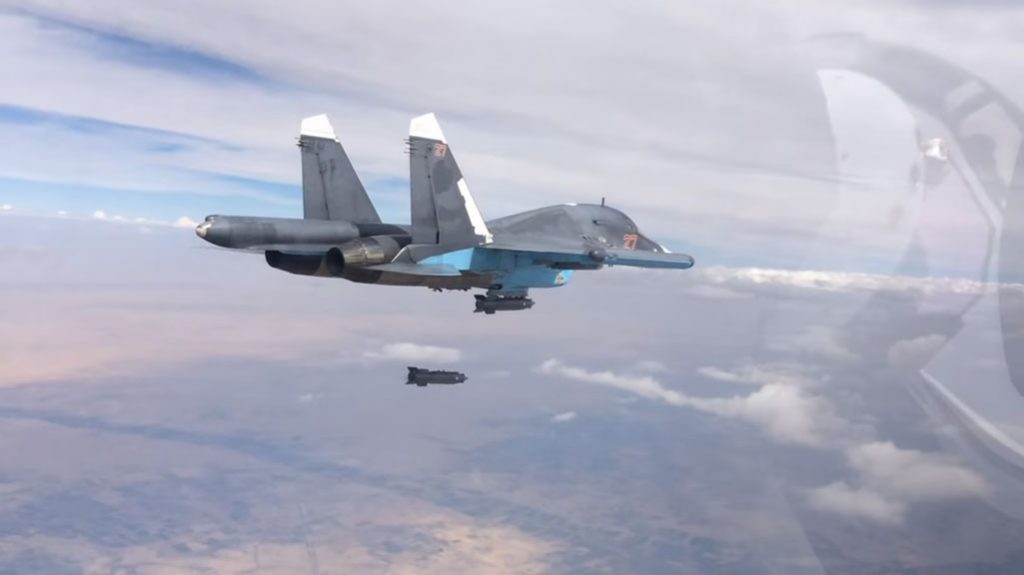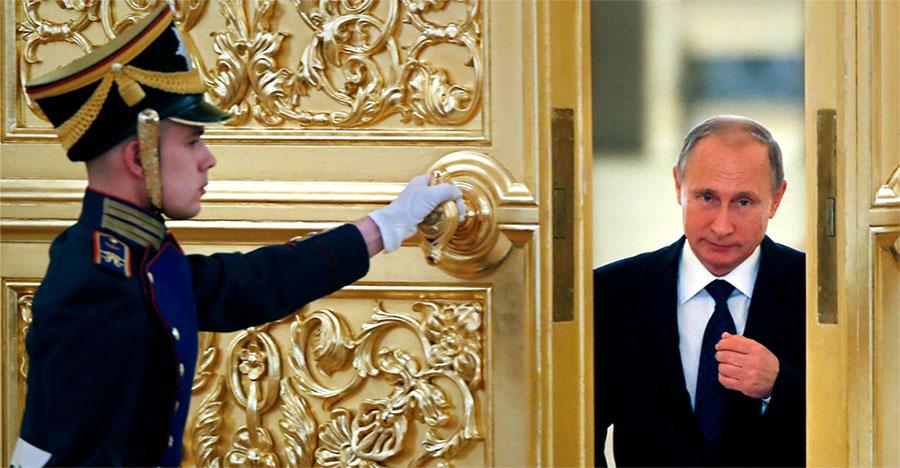Iran allowed Russia to send its bombers from their air base to attack militants in Syria on Tuesday. The long-range Tu-22 bombers launched raids in Syria’s Aleppo, Deir al-Zour, and Idlib provinces in support of Syrian President Assad, in an attempt to fight terrorist groups that now control part of the country.
Russia’s new alliance with Iran sends a clear message: the Kremlin is widening its campaign in Syria and becoming more influential in the Middle East. The long-range Tu-22 and Sukhoi-34 fighter-bombers used Iran’s Hamadan air base to reduce the aircraft’s flight times to get to Syria, which means that they used less fuel and had the opportunity to carry more bombs. According to Iran’s Fars News Agency, Russia’s long-range bombers have to fly 1,200 miles if they take off from Russia. And from Iran, they only have to travel about 400 miles.

This is the first time Russia has launched an attack on militants in Syria from a foreign country during the Syrian conflict. For Iran, this is the first time since 1979 that the nation allowed a foreign country to use its territories for military operations. The last time the Iranian state agreed to lend its air bases was in the Islamic revolution.
Ali Samkhani, Iran’s National Security Council chief, said on Tuesday that Iran and Russia are strategically cooperating in the fight against terrorism in Syria, and sharing facilities and capacities are only serving to that purpose, Islamic Republic News Agency reported.
Iran has sent Shiite-led troops and fighters to Syria to help President Bashar al-Assad to defeat Sunni rebels in his country’s territories. The Syrian government wants to regain control of Aleppo, which would be a major victory for the regime since the conflict began five years ago.
The targets for this recent airstrike in Syria were mainly gathered in Aleppo, the largest Syrian city that is currently divided in two: a part controlled by the national army and the other part controlled by rebels. The militants are from al-Qaeda and the recently formed group of Jabhat Fatah al-Sham, a group of militants that separated from al-Qaeda.
According to Russia’s Defense Ministry declarations, the bombers managed to destroy five major ammunition depots, a militant training camp, and three command posts and control points and a significant number of rebels.
And now that Russia is enjoying Iran’s military hospitality, the Kremlin can intensify its air campaign against militants groups in Syria, becoming an influential character in the Middle East.
How comes that now Iran and Russia are so close in military terms?
The U.N., the E.U., and the U.S. lifted the financial sanctions against Iran after the country agreed last year to curb its nuclear program. Since then, Russia became closer to the nation.
In 2015, Russia and Iran started a military cooperation to fight terrorism. The deal included training to face the rebels and the waiting of the S-300 air-defense missile system that Iran had ordered in 2007. But the controversy regarding Iran’s nuclear program long delayed the delivery, until May 2016.
A nuclear deal was signed between Iran and six world powers, and there was no problem with the sale and the delivery of the missile system.
Last November President Vladimir Putin visited Iran to discuss military strategies in Syria: Russia provides air strikes, and Iran sends ground forces to work with Syrian government’s forces.

On Sunday, Putin discussed bilateral relations in Tehran and requested the use of the Iranian airspace to fire cruise missiles at militant targets in Syria, The Washington Post reports.
And on Tuesday the Kremlin asked permission to Iran and Iraq to launch its cruise missiles from Russia’s Caspian Sea fleet into Syria. This has been done in the past and both countries granted the permission, according to Reuters.
Russia has a naval presence in the eastern Mediterranean, and the Caspian Sea is part of a planned military exercise. But Tuesday actions prove that Moscow has other intentions apart from training its military forces.
Air strikes are defeating rebels both in al-Qaeda and Jabhat Fatah al-Sham, but the main problem is that bombs cannot differentiate civilians from rebels
A U.K.-based war monitor, The Syrian Observatory for Human Rights, reported that the airstrikes launched on Tuesday killed dozens when hitting targets in and around Aleppo and the other marked territories.
Rights groups have claimed that Russia’s and Syria’s attacks have also strike civilian targets, including hospitals, schools, and homes. But Syrian and Russian authorities denied those statements.
Reuters reports that the Russian Defence Ministry stated that it takes great care to avoid civilian casualties in airstrikes.
Other allegations were made against both nations on Tuesday. The New York-based Human Right Watch accused Russian and Syrian forces of having used banned incendiary weapons in civilian areas.
Source: The Washington Post
